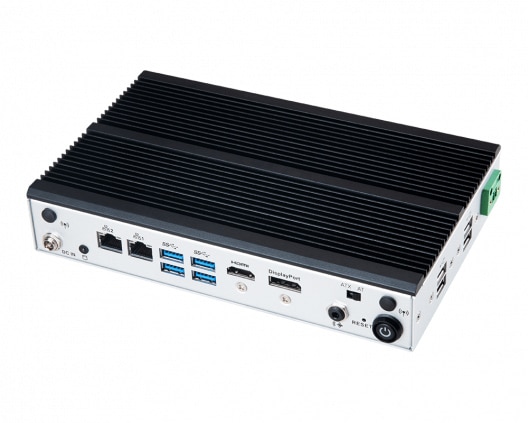
The Importance of MTBF for Industrial Computers
Posted on November 3, 2023
Component manufacturers compete with one another to release components with a higher MTBF. But what does MTBF mean, and why does it even matter?
The Difficulty in Measuring Reliability of an Electronic Device
Measuring a device’s reliability can be tricky. Hardware faults and technical breakdowns can be notoriously random, where one device runs for years without issues and another of the same model dies in a day. This is because there are a lot of factors that play a role in deciding when an electronic device breaks down. Conditions of deployment vary, work-loads vary, and there might even be minor manufacturing defects in a certain product.
Thus, is it more useful to measure the average chances of failure of a given product, and that’s exactly what MTBF tries to do.
What is MTBF?
MTBF, or Mean Time Between Faults, is a measure of how failure-prone a given product is. It does so by measuring the average time between two faults, where a fault is defined as a failure that puts the device out of commission but is usually repairable.
Of course, the actual methodologies for measuring MTBF vary, so it can only be taken as a rough estimate of a device’s reliability. This is especially true for embedded computers as the operating conditions can vary greatly from the ideal test environment, making the actual rate different as well.
That being said, MTBF is widely used as a basic measure for comparing the reliability of different components or products with each other and deciding the right configuration for a job.
Why is it Crucial to Minimize the Rate of Failure?
But why even bother with trying to go for a product with a lower frequency of faults? As long as the faults are repairable, and the hardware provider offers technical support, shouldn’t it be fine?
The thing is, when it comes to commercial or industrial systems, downtimes are expensive. The time for which the device is not functioning and is being repaired is the time at which your facilities are running at a disadvantage, potentially costing you much more than the repair costs themselves.
And while you cannot eliminate faults entirely, going for a setup with a high mean time between failures greatly reduces this downtime, ensuring that your machines work longer before breaking down and needing repairs.
What Are Some Ways of Increasing MTBF for Embedded PCs?
The mean time between faults for an embedded computer depends not only on the quality of the components used but also on the form factor and configuration. Depending on the intended operating environment, special components might also be required to increase the MTBF of the final setup.
Fanless Cooling
Regardless of the other specifications of the PC, a cooling fan is often the reason for most faults in a computer system. This is because the fan constantly pushes in dust and other debris into the casing, apart from serving as a point of failure itself.
A fanless cooling system, in contrast, uses specially designed fins on the chassis to radiate the heat away, maintaining a separation of the internals from the surrounding environment. This greatly increases the mean time between faults, particularly in outdoor or industrial environments.
Solid State Drives
Generally speaking, reducing moving parts increases the mean time between failures for any electronic device. For a computer, this means doing away with a traditional hard disk drive.
An old-school HDD consists of a spinning magnetic disk with a moving arm to read and write information from it, creating multiple points of failure that can bring the PC to a halt. Apart from the deterioration of these mechanical components due to general wear and tear, HDDs can get damaged by vibrations or physical impacts, which are very common in many industrial embedded applications.
An SSD, on the other hand, is a purely electronic storage medium without any moving components. This makes it virtually vibration-proof, not to mention more long-lasting in general. That you get better data read-write speeds with an SSD is just the cherry on top.
Rugged Components
Keeping the needs of industrial PCs in mind, many components come with special ratings to deal with harsh environments. Embedded systems meant to operate in freezing temperatures (or high-heat deployments) use components rated for those extreme temperature ranges.
Vibration resistance is good to have for PCs meant as vehicular systems, while waterproofing is crucial for panel PCs to be installed in food or pharmaceutical industries. Getting the right component for the job can significantly cut down the probability of failures, increasing the MTBF of the whole setup.
Is MTBF Important to Consider Before Buying an Embedded PC?
For any commercial or industrial application, the computer is not just a convenience, but an investment. And when these embedded systems fail and stall the process, it costs you.
Therefore anything that can reduce the frequency of these breakdowns should be prioritized, and the key to this is finding out the Mean Time Between Faults (MTBF). MTBF gives you a good measure of how likely a component is to fail and choose a more reliable system for your needs.
At Global American our engineers ensure to keep the MTBF in mind when recommending systems for your needs, picking the components best suited for the projected work and conditions.
